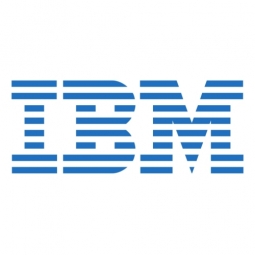公司规模
SME
地区
- America
国家
- United States
产品
- nViso Emotional Analytics
- SoftLayer Cloud Environment
技术栈
- Cloud-based platform
- Facial imaging technology
实施规模
- Enterprise-wide Deployment
影响指标
- Productivity Improvements
- Brand Awareness
技术
- 基础设施即服务 (IaaS) - 云计算
适用功能
- 销售与市场营销
用例
- 行为与情绪追踪
- 面部识别
服务
- 云规划/设计/实施服务
关于客户
Fabler Studio 是一家位于纽约市的视频后期制作服务公司。该公司与领先的机构和品牌合作,创作屡获殊荣的商业内容。作为竞争激烈的市场中的一家相对较新的公司,Fabler Studio 一直在寻找方法来使其服务与众不同并为客户提供独特的价值。该公司的董事总经理 Nathan Byrne 对可以增强公司视频编辑服务并深入了解消费者反应的创新技术特别感兴趣。
挑战
Fabler Studio 是一家位于纽约市的视频后期制作服务公司,该公司正在寻找一种在竞争激烈的市场中脱颖而出的方法。该公司对面部成像技术很感兴趣,该技术可以捕捉人们对其视频内容的情绪反应,提供即时反馈并洞察消费者的反应。这项技术将为该公司提供独特的卖点,使其从竞争对手中脱颖而出,并为客户提供更全面的服务。
解决方案
Fabler Studio 选择实施 IBM 业务合作伙伴 nViso SA 提供的情感分析产品,该产品托管在 SoftLayer 云环境中。该基于云的平台提供对视频内容的情感反应的即时分析,这些分析由 nViso 的面部成像技术捕捉。该平台提供的见解可立即付诸行动,使 Fabler Studio 能够在粗剪阶段的每个阶段将反馈整合到其创作过程中。SoftLayer 云基础设施为 nViso 的分析功能提供了经济高效的交付环境。
运营影响

Case Study missing?
Start adding your own!
Register with your work email and create a new case study profile for your business.
相关案例.

Case Study
How Sirqul’s IoT Platform is Crafting Carrefour’s New In-Store Experiences
Carrefour Taiwan’s goal is to be completely digital by end of 2018. Out-dated manual methods for analysis and assumptions limited Carrefour’s ability to change the customer experience and were void of real-time decision-making capabilities. Rather than relying solely on sales data, assumptions, and disparate systems, Carrefour Taiwan’s CEO led an initiative to find a connected IoT solution that could give the team the ability to make real-time changes and more informed decisions. Prior to implementing, Carrefour struggled to address their conversion rates and did not have the proper insights into the customer decision-making process nor how to make an immediate impact without losing customer confidence.

Case Study
Engaging Fans at one of the Largest Stadiums in the USA
Engaging and delighting fans has become the number one priority. However, the identity and behavior of fans within the stadium have been impossible to detect until Sirqul. Furthermore, standalone mobile apps historically have only seen a 5-30% penetration rate, thus leaving venues with poor data, insights and little interaction with the fan itself.This large stadium was looking for a set of recommendations to improve the fan experience, increase revenue and optimize operational efficiency based on this never seen before data.

Case Study
Faceware Technologies
When you’ve developed innovative, groundbreaking software that brings emotion to the gargantuan Godzilla on the big screen or adds life to leading video game characters to the delight of serious gamers, protecting your intellectual property from counterfeiting and reverse engineering is paramount. When evaluating licensing and IP protection vendors, Faceware Technologies, Inc. turned to Wibu-Systems’ CodeMeter to protect their valuable intellectual property that was years and over $40 million USD in the making.

Case Study
Creating a Customer Focused Shopping Experience with Blockchain & IoT
Gini & Jony, a Nucleus Vision client, and Brick and mortar stores retail customers in general hardly get personalized pricing, custom offers, or preferential treatment for being a brand or store loyalist. This primarily stems from the store’s inability to differentiate between customers in offline stores.

Case Study
The New Start Line Performance Data Goes Real Time
Cyclists typically had to take a device off the bike and connect to a computer to upload information. Data was imprecise and the analytics came long after the ride was over. Quarq wanted to find a new way to help atheletes adjust the rides in real time and help fans to get closer to the games.

Case Study
EDF's Transformation: Enhancing Employee Experience through IT Modernization
EDF, a major UK utilities company, was grappling with a highly customized service management system that was largely manual, with limited potential for automation. This made it difficult to predict or prevent system failures and provide a resilient service. The company's IT system for incident handling was purely manual, leaving no room for modernization. EDF wanted to serve its business and residential customers better by improving the response time to rising energy demands. To achieve this, the company needed to provide its employees with the right tools for improved productivity, better collaboration, and an enhanced IT experience at a reduced cost to serve.







